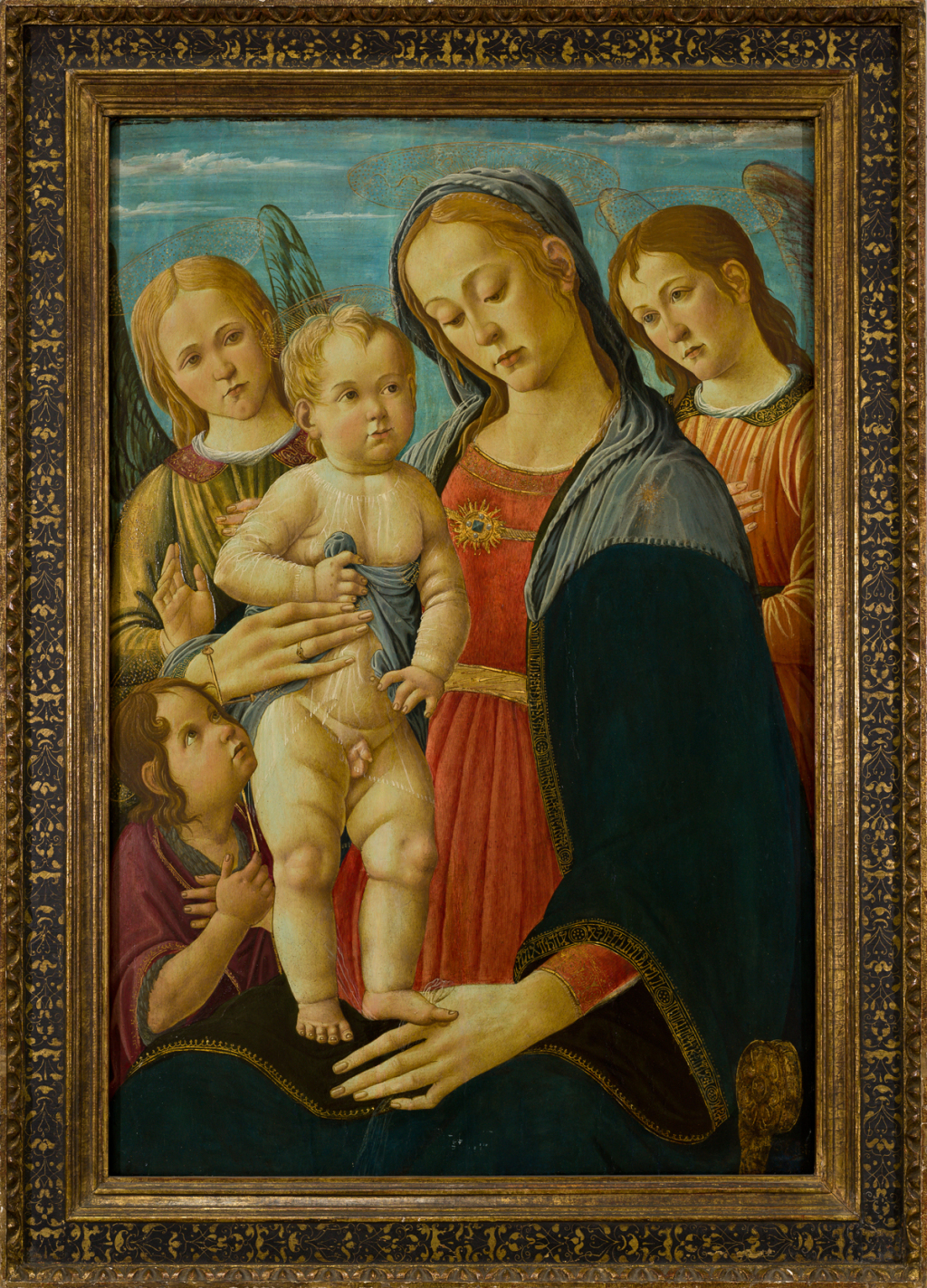[ad_1]
A painting believed to be lost during the Nazis’ persecution of the Jewish people will continue to remain in a famed Italian collection after negotiations with the heirs to the work’s original owners.
The work, Madonna and Child with the Young St John and Two Angels (1480–85) by Jacopo del Sellaio (also known as Jacopo di Arcangelo), a student of Renaissance master Filippo Lippi, is owned by the Cerruti Collection in Turin, but was once among the holdings Viennese art collector Gustav Arens, who purchased it from Galerie Sanct Lucas in Vienna in 1936. (The work was eventually inherited by his daughter Ann Arens Unger.) The painting was among those bequeathed by Italian collector Francesco Federico Cerruti, who purchased it in the 1980s, to the Castello di Rivoli Museum in Turin after his death in 2015.
In an interview with ARTnews, Carolyn Christov-Bakargiev, the director of the Castello di Rivoli, said, “Our intention was to find an equitable agreement, which includes monetary compensation, and an amicable agreement, which takes into consideration the wishes of the Castello di Rivoli to continue to exhibit the work, so that it would not be lost again.”
The museum brought on a 60-person team to research the provenance of every work in the Cerruti collection in 2017. Eventually, the Castello di Rivoli realized that the del Sellaio painting, which hangs in the tower bedroom of the collector’s Villa Cerruti, was the one that had been seized from the family during World War II. Lawyers for the Cerruti Collection then contacted the Holocaust Claims Processing Office of the New York State Department of Financial Services, which has been working with Arens’s heirs for 20 years.

Photo: Francesco Federico Cerruti/Courtesy Castello di Rivoli Museo d’Arte Contemporanea, Rivoli-Turin
As part of the terms of the restitution agreement, which includes an undisclosed sum paid out to the heirs, the painting will stay in Turin, and the Castello di Rivoli will have to explain the story of the Arens-Unger family’s ownership of the work in its wall text and future catalogues featuring the painting. Also as part of the agreement, the museum has sent reproductions of the del Sellaio Madonna to each of the four living heirs: Grete Unger Heinz, Karen Reeds, Andrea Meier, and Alan Meier.
In a statement, Unger Heinz, Ann Arens Unger’s daughter who remembered seeing the work as a child, said, “At almost 93, I had lost hope that this beloved Italian Renaissance painting belonging to my parents would ever resurface. I am pleased not only that the Cerruti Foundation has reached an equitable agreement with the Unger family heirs, including a full account of the painting’s troubled history, but also that I might yet see the work itself in the Castello di Rivoli Museum in my lifetime.”

©Grete Heinz/Courtesy Castello di Rivoli Museo d’Arte Contemporanea, Rivoli-Turin
Vienna-based art collector Gustav Arnes died shortly after acquiring the del Sellaio Madonna, which had been previously attributed to another Renaissance artist, Raffaellino del Garbo. After his death, Ann Arens Unger, Gustav’s eldest daughter, inherited the work, among 60 others he owned. In March 1938, Nazi Germany had annexed Austria and subsequently seized the entire 120-work Unger collection, which was also inherited by Ann’s sister Lise. The Unger family fled Austria in June 1938 for France and paid a ransom to move the collection to Paris. The family then emigrated to the United States in May 1939, but could not export their art holdings from France.
Soon afterward, the Nazis occupied Paris and the works in the Unger collection were transported by vehicle to the city’s Jeu de Paume museum, which served as a sorting house to determine which seized artworks would be sent to Germany. Christov-Bakargiev said that Jacopo del Sellaio’s Madonna never made it to the Jeu de Paume, as the vehicle carrying it mysteriously disappeared.
The Unger family attempted to restitute works from their collection after the war ended and were able to receive several of the pieces, but the del Sellaio Madonna was not among them because it could not be located. In that time, the work passed through Galerie Fischer in Lucerne in 1974 and sold at a Christie’s auction in London in 1985, ultimately ending up with art dealer Gianfranco Luzzetti, who sold it to Cerruti in 1987. (The Castello di Rivoli said Cerruti was unaware of the work’s history or any restitution claims.)
“This particular case tells us so much about what the Nazis did and how dangerous certain political authoritative regimes can be,” Christov-Bakargiev said.
[ad_2]
Source link

